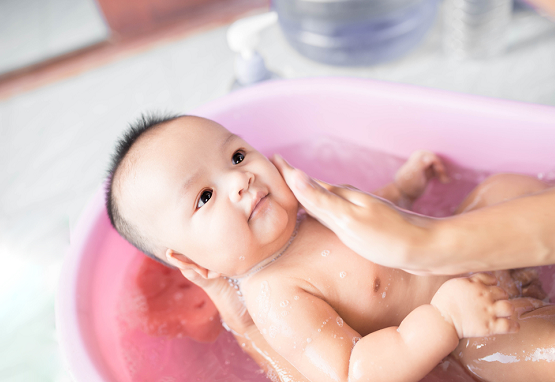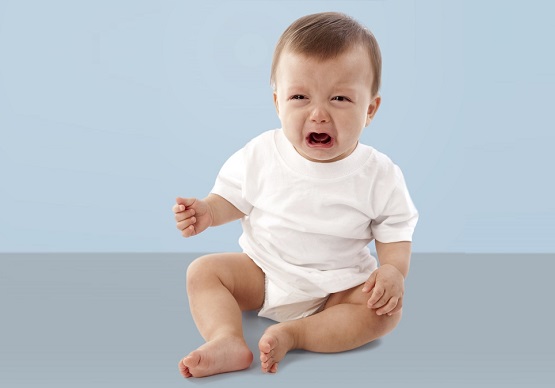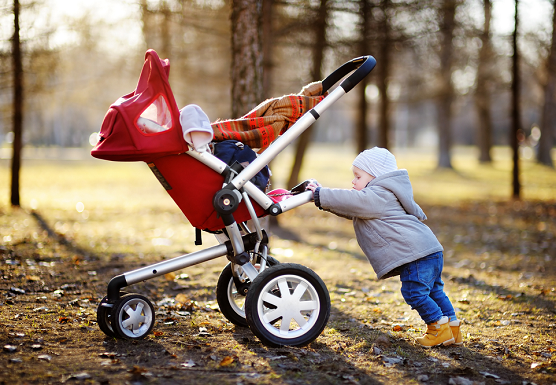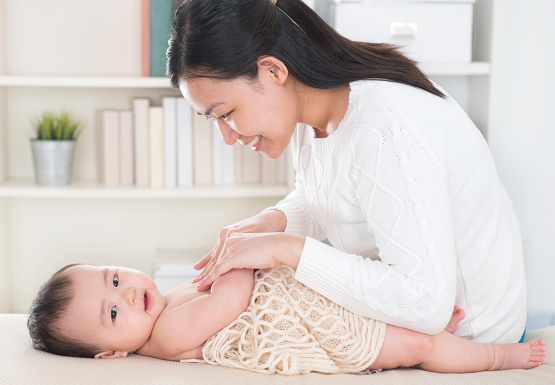Tender Loving Care: Soothing and Solving Baby Skin Conditions

Babies’ skin is fragile, sensitive and still adjusting to the shock of the new – life outside the womb. Here are some common problems and solutions.
DEHYDRATION
Problem: Since a baby’s outer layer of skin is thin and the sweat gland function is not fully developed, the skin becomes easily dehydrated in environments such as airconditioned rooms or in dry, hot or cold weather.
Solution: Besides commonsense measures such as wearing mittens and protective infant clothing, avoid bathing your baby with alkaline cleansing liquids and choose a baby skin care product with a moisturising ‘lock’ effect to prevent roughness and chapping.
HEAT RASH
Problem: In warm environments, or due to wearing excessive clothing, sweat can accumulate on a
baby’s skin and cause small raised rashes. These mostly appear on the forehead, neck, back, armpits and chest.
Solution: Gently wash the affected areas with a baby cleanser, avoid excessive swaddling and plastic mattresses. Make sure your baby’s room is well ventilated, and choose loose, cotton clothing.
DIAPER RASH
Problem: Diaper rash, or nappy rash, is caused by prolonged contact with urine and stools. It can be very painful for babies and distressing for parents. Humidity, enzymes in the stools and the highly acid pH of urine may cause irritation or skin lesions. It can be compounded by nappy friction, which can weaken the skin’s protective layer, and other factors such as medication, gastroenteritis, teething and allergies to hygiene products.
Solution: Leave your baby’s buttocks uncovered to the air to facilitate healing. For bright red skin, you can apply eosin to cleanse and dry the irritated area. Apply a specific cream for changing nappies, ideally a hypoallergenic one, or a water-based paste to repair and soothe the irritation. Make sure you change your baby frequently to prevent excessive contact with a dirty nappy.
ECZEMA
Problem: Babies prone to eczema, also known as atopic dermatitis, can break out in rashes anytime, anywhere. A wide range of triggers includes exposure to wind, heat and even woolen clothing. Eczema usually erupts in red and dry patches, sometimes accompanied by small blisters, which later form itchy scabs. These commonly appear on baby’s cheeks, elbows, knees, and body parts. After two years of age, it more commonly occurs on the neck and in the folds of the hands and feet.
Solution: Since eczema spans a vast range of triggers and symptoms, there is no one-size-fits-all remedy. A general rule-of thumb is to keep your baby’s skin well-moisturised, to strengthen its barrier function. There are many tried and tested products on the market. If little or no relief is attained, be sure to consult a doctor.
MILK RASH
Problem: Milk rash is a red facial rash that is common among newborns and infants during the first few months of life. Small, white pimple-like bumps typically appear on the face, shoulders and tops of arms. These bumps, known as ‘milia’, may also spread to the arms, torso or genitalia.
Solution: Milk rash will usually disappear within a few weeks on its own, but it can help to keep the affected area clean and dry. If the rash persists, your baby could have a more serious condition, like an allergy to cow’s milk or another newly introduced food.
CRADLE CAP
Problem: Also called Seborrheic Dermatitis, cradle cap is very common in infants. It resembles scales (thick, ugly plaques) which form a kind of scalp dandruff, which can detach completely on rubbing. Often yellow and oily, these scales, often found on the scalp, can also develop on the baby’s face or body. They are the result of over-production of sebum.
Solution: Cradle cap is harmless and generally disappears after a few months. To hasten its departure, you can apply sweet almond oil directly on the baby’s scalp. Over time, this will soften the scales and make them easier to remove by washing with a gentle baby shampoo. Never scrape the scales, as it can cause bleeding and infection.
WHEN TO CONSULT A DOCTOR
If over-the-counter remedies bring little or no relief after two or three days, or when baby’s sleep is disrupted, you should consult a doctor. Likewise, if signs of fever and infection are present, including heat, tenderness, cracking, bleeding, oozing pus and red streaks extending from the affected area, you should always seek medical advice.
INNOCENT MISTAKES TO AVOID
Sometimes parents may unintentionally aggravate their babies’ skin conditions by excessive bathing, or by using the wrong products.
It is generally recommended that babies are bathed only once or twice a day with gentle products that are specially formulated for babies. Since babies are indoors most of the time, short and quick baths in the morning and once in the late afternoon or early evening should suffce. If your baby perspires or needs cleansing between baths, a quick wipedown with Micellar Water should do the job.
TRIED AND TESTED PRODUCTS
Compared to adults, babies have a very large skin area to weight ratio, so any products that are absorbed by a baby’s skin will have a more concentrated effect than for an adult. Baby products are generally broken down into smaller molecules for easy absorption and cleansing, and are gentler than products for adult use.
In short, apply common sense, tender loving care and use only products that have been especially formulated for baby skin.
This article is taken from our My Alvernia Magazine Issue #34. Click here to read the issue on our website or on Magzter



